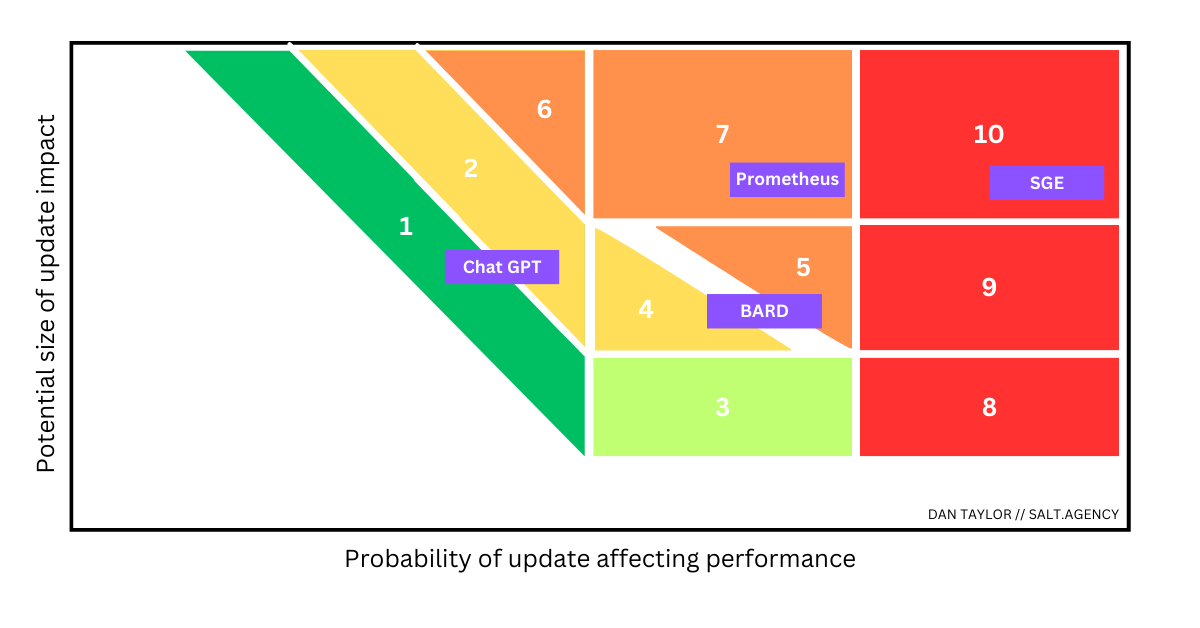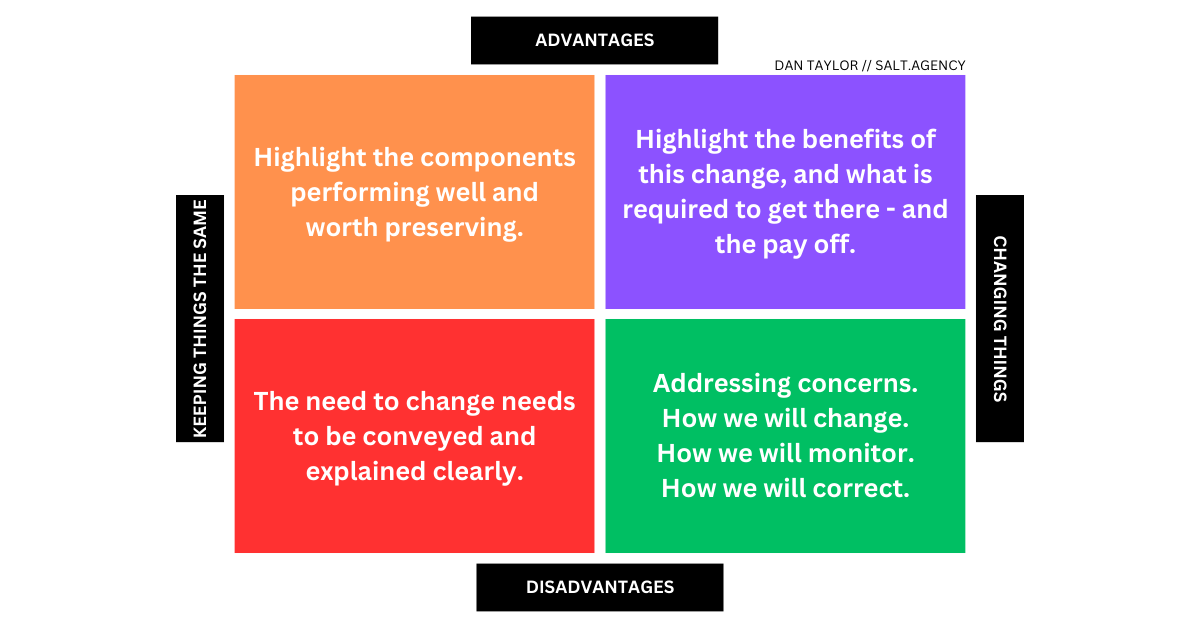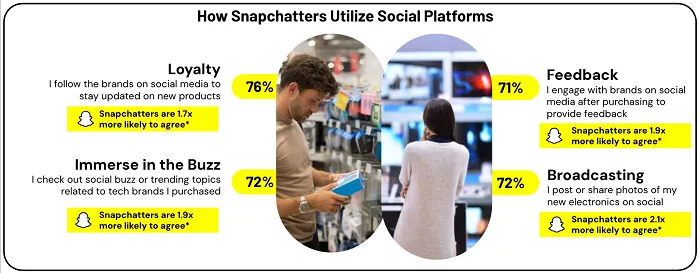Communicating Major Google Changes To C-Suite via @sejournal, @TaylorDanRW
Learn to communicate effectively with the C-Suite. Discover the keys to aligning SEO strategies with business goals. The post Communicating Major Google Changes To C-Suite appeared first on Search Engine Journal.

As Google continues to release more updates, confirmed and unconfirmed, a broader range of business stakeholders are becoming more aware not only of the changes made by Google, but also of how evolving technologies are impacting consumerism as a whole.
Gartner publishes an annual study of CEOs and CFOs, and a key takeaway for 2024 is that AI is very much on the radar:
While many areas of technology are of interest, CEOs and CFOs agree that AI will most significantly affect their business over the next three years.
The current global economic climate is also putting pressure on budgets and how much is invested into each channel.
SEO as a marketing function has obvious performance metrics it can and will be judged by – but buy-in and understanding from business stakeholders can also determine the “success” of a campaign.
Many of us have been steering successful SEO campaigns for businesses only to face challenges, as they don’t understand specific components or the overarching strategy of the campaign.
When we’re communicating Google changes –whether they be algorithmic or upcoming products such as Search Generative Experience (SGE) – stakeholders need to understand the meaningful impact on them and the business, as well as the high-level commentary of what is changing.
Understanding Impact
Whenever we try to understand and estimate the potential impact of new technologies or changes in the marketplace, we have to start with a number of baseline assumptions.
The three assumptions we can make (and can model data against) are, at a high level:
There will be no significant impact on the business. There will be a minor impact on the business. There will be a significant impact on the business.We want to talk about the impact on the business and not just on SEO as a channel, as the wider marketplace (especially at the time of writing) is transitioning with new technologies and brand/user touchpoints emerging.
Incorporating PESTLE Into Stakeholder Communications
A PESTLE analysis is a strategic management tool to identify and analyze the external macro-environmental factors that can impact a business and its functions.
These factors are categorized into six key areas: Political, Economic, Social, Technological, Legal, and Environmental.
This analysis helps businesses understand the broader landscape in which they operate by considering how each of these external elements can influence their strategies, operations, and potential success.
Most Google changes (and algorithm updates) would typically fall into Technological, but something as disruptive as SGE could also fall into Social, as it has the potential to impact consumer behavior.
Identifying Risk
From an SEO standpoint, our primary focus is how large the scope of impact on our client’s meaningful organic web exposure is.
I say meaningful as not all traffic to a website is meaningful, and not all website touchpoints create short or long-term value.
To better understand the impact at a site/domain level, we need to categorize traffic and search terms by user objective and not just the prescribed search intent.
Users searching on Google can fall (loosely) into four categories:
Participator – The user wants to be engaged and have an experience, whether it be watching a video, engaging in a discussion via a forum, or specifically looking to consume content from a known or recommended peer. Learner – The user is looking to be educated. They have a question they want answered; they’re not tied to the brand that answers it (although a known brand could be trusted more). This may lead to query stacking. Shopper – The user wants to find the “thing” that best suits their use case or need as seamlessly as possible and then purchase either online or in person. Purchaser – The user wants to buy a thing. In funnel terms, they are very much bottom of the funnel (BOFU), and looking to make a purchase or whittle down the final options with a purchase coming soon after.Now, SGE (and AI) doesn’t affect all of these user types equally.
Someone who is a Participator will actively seek out the engagement and P2P conversations they want, and similarly, for a Purchaser, AI can help steer the journey – but (as of right now) it can’t directly facilitate the action. A user still needs to visit a store or website to do so.
Suppose the website relies on a lot of top of the= funnel (TOFU) or middle of the funnel (MOFU) traffic for product or brand discovery.
In that case, it is more likely to see a meaningful impact on performance than a website that gets the most traffic from users either searching directly for their brand, for the onsite experience offering, or to buy something directly.
Communicating Impact & Risk
Communicating the impact and risk of emerging technologies to business stakeholders effectively requires a balance of clarity, thoroughness, and relevance.
Effective communication in this context is about building confidence and support for strategic decisions related to emerging technologies, ensuring stakeholders are well-informed and aligned with the business’s strategic direction.
Torino Scales & 4-Box Models
One method I’ve started using to visually communicate the potential impact of emerging AI technologies to businesses is a framework used by scientists in communicating the likelihood and impact of an asteroid hitting the Earth: the Torino Scale.
At a top level, this visual aid helps stakeholders of all technical capabilities understand at a high level the landscape of Google updates and products either being rolled out or on the horizon – and which ones warrant the most attention.
 A modified Torino Scale to communicate the impact of Google updates and products to stakeholders.
A modified Torino Scale to communicate the impact of Google updates and products to stakeholders.
The current focus on AI (as a market disruptor) is a great example of this.
I talk to a lot of companies and brands; CMOs and CEOs are aware of AI technologies, and they know about ChatGPT, but they don’t know about Search Generative Experience.
Introducing a visual like the Torino Scale, with commentary, coupled with a 4-box driven communication and shared every month alongside the standard SEO performance reporting, can help both get stakeholder buy-in and improve the overall relationship.
The Four Box Model, a matrix-style diagram, was initially created by President Eisenhower in the 1950s. Initially designed as a tool for managing time effectively, its use has since expanded significantly.
It serves a broad range of purposes, one of the key ones being its role in facilitating the process of managing changes within organizations.
 Image created by author, December 2023
Image created by author, December 2023
Each of the four boxes plays a role in how individuals perceive and adapt to the change process.
The red and green boxes, which represent resistance, have the most impact, followed by the influence of the orange box. As people begin to resonate more with the concept of change, they find the blue box increasingly attractive.
When proposing any change to either improve performance or mitigate risk, you follow a process along the lines of:
Explaining why there needs to be a change (red box). Explaining what the benefits will be, as well as the resources required to achieve it (blue box). Identify and show how progress will be reported on, and the processes in place to pivot/adapt should the market or metrics dictate a need to change (green box). Highlight what can and will be preserved as part of the transformation (orange box).Detailing each stage of change within these boxes enhances comprehension across all organizational levels.
This straightforward but potent activity also aids top management in concentrating on particular aspects and addressing concerns previously unnoticed.
More resources:
15 Reasons Why Your Business Absolutely Needs SEO How to Evangelize Enterprise SEO Success & Communicate With the C-Suite How to Win Buy-in for Technical SEO Initiatives with User StoriesFeatured Image: insta_photos/Shutterstock

 Fransebas
Fransebas 
































